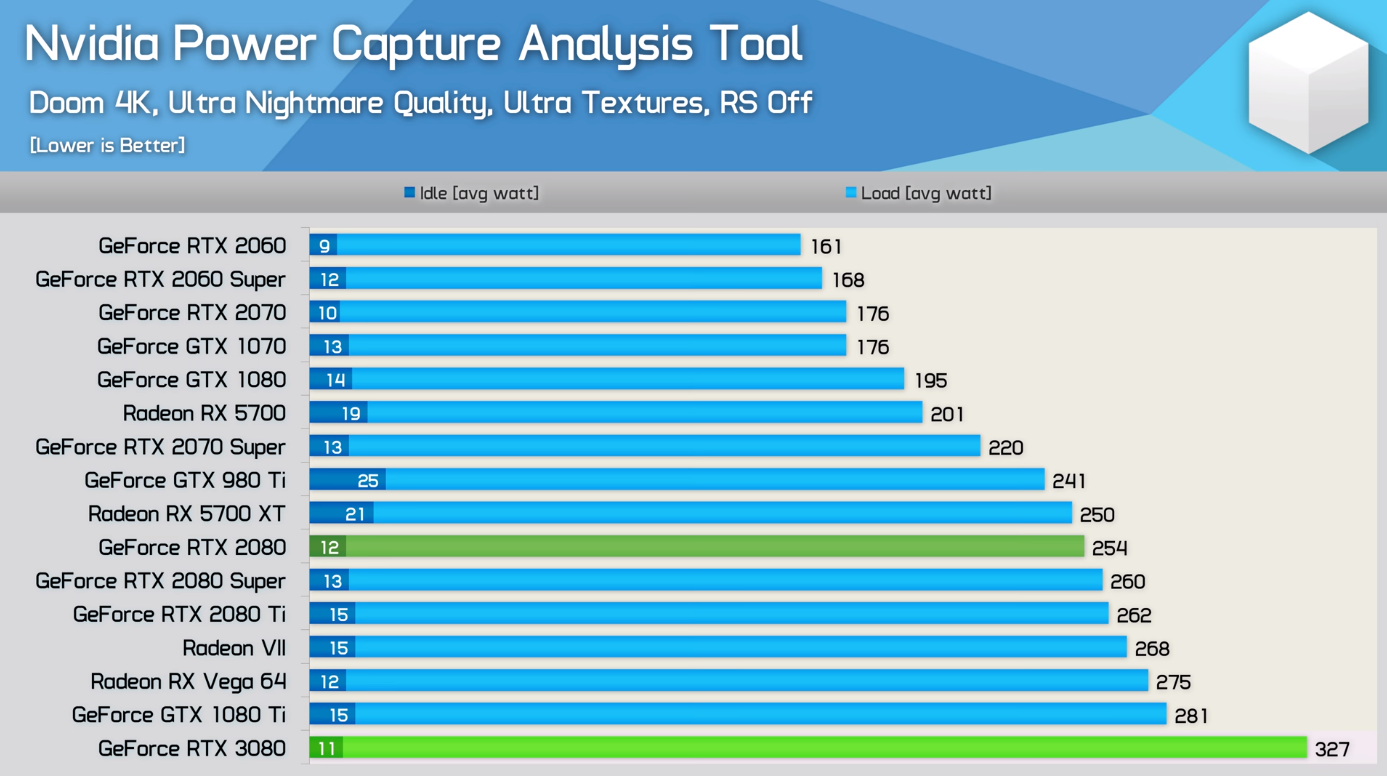gamervivek
Regular

Hardware Unboxed noticed the coil whine as well.
So PCAT has been really useful for nvidia there, the total system power consumption difference from the second-highest power hog was around 80W.
Follow along with the video below to see how to install our site as a web app on your home screen.
Note: This feature may not be available in some browsers.

Hardware Unboxed noticed the coil whine as well.
As far as I can tell, the console platforms are intending to use VRS. However VRS seems to be ?somewhat incompatible? with DLSS - which may create a mess on PC.
Should I pull the trigger? Still kinda concerned about 10GB.$/fps is insanely high for 3080 of course, only beaten by 5700XT.
Should I pull the trigger? Still kinda concerned about 10GB.
Or maybe I buy that rowing machine...
Seems to me that this gpu really shows that flops isn't everything. I've no proof of course but I believe that the more you need fp32, the more this gpu will shine. In others situations, it will be bottleneck elsewhere (bandwitdh ? Rops? Even drivers ? A mix of everything I guess). In a weird way it reminds me some old ati gpu
I feel disappointed. less than 30% performance improvement. Yeah they are not so overpriced this gem but I hoped more. Also 10GB in the next years will probably won't be enough for 4K gaming. That and the 400W OC
still worried about the ram30% performance improvement over the 2080ti for what 60% of the price? I guess if you have a 2080ti the upgrade is not as clear cut. For everyone else, it's an easy winner.
still worried about the ram
30% performance improvement over the 2080ti for what 60% of the price? I guess if you have a 2080ti the upgrade is not as clear cut. For everyone else, it's an easy winner.
That and power consumption. It looks like notebook users will be stuck with cards like the GF1660.still worried about the ram
my vega 56 is what just over 3 years now. So i'm hoping to keep my new card 3 years.It's about the only thing I'd worry about, but I'm not that worried.
That and power consumption. It looks like notebook users will be stuck with cards like the GF1660.
That and power consumption. It looks like notebook users will be stuck with cards like the GF1660.
Do you want to risk being "stuck" with 10GB until a worthwhile better card launches in 2 years' time? What happens to second-hand prices of 10GB cards if 20GB cards launch in November? Or even 12GB?I'm wondering the same. Maybe DirectStorage will help or perhaps developers will start to optimize for 10GB now that there is 4k capable 10GB card. Worst case, run 1440p and use dlss.
I somewhat recall Digital Foundry found that VRAM consumption increased quite a bit when they tested Battlefield V. Maybe that'll change a bit with more optimization, but I figured there'd be a non-trivial increase from the various buffers involved.One of the things that I'm still struggling to understand is the VRAM impact of ray tracing. It's likely to become more common in games over the next couple of years but I have no idea whether it's going to be significant.
Notebook variants of the 20xx GPUs are heavily throttled to make them fit for a laptop. And even at the 80W limit of the MaxQ cards, the notebook cooling solutions required already start to be heavy and noisy. The most sensible solution would be a card capable of playing games maxed out at 720p, RT included, coupled with a high performance, high quality dedicated upscaling unit. But if the upscaling process has to run on the same shader units, as it happens now with Ampere, then the upscaling performance is tied to that of the whole GPU.Why? RTX3070 delivers 2080TIFE performance with 50W less. nVidia has put a "2080 super" into notebooks. The 3070 will deliver much more performance than this card.
Do you want to risk being "stuck" with 10GB until a worthwhile better card launches in 2 years' time? What happens to second-hand prices of 10GB cards if 20GB cards launch in November? Or even 12GB?
.
